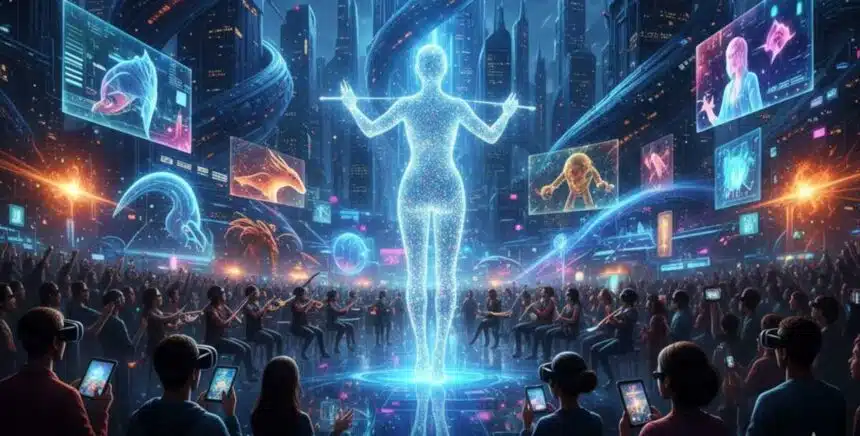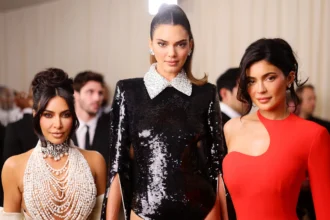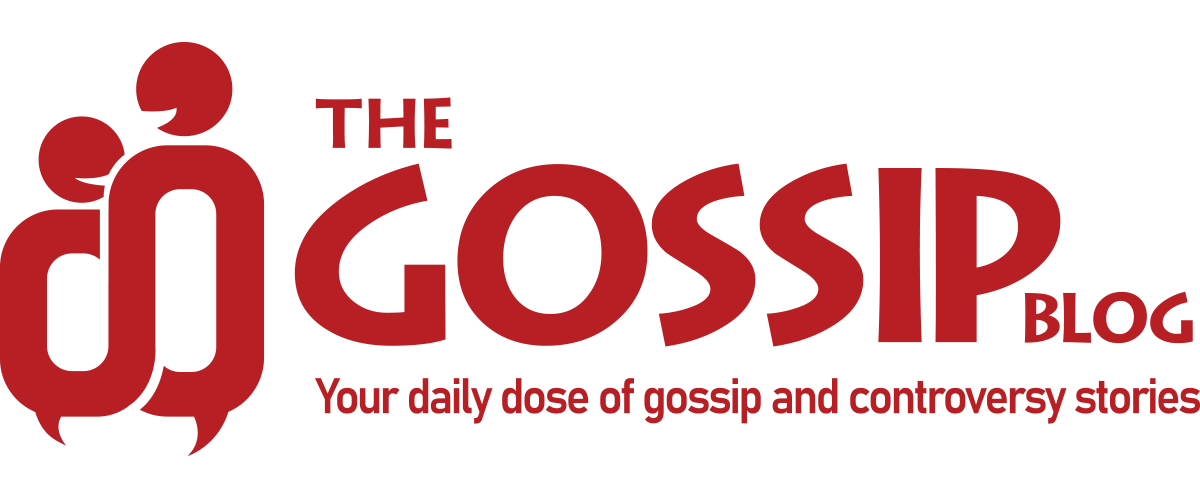Artificial Intelligence is no longer a sci-fi plot device — it’s the invisible hand behind much of what we watch, hear, and scroll through every day. From playlists that feel uncannily tuned to your mood to blockbuster effects that erase decades from an actor’s face, AI is rewriting the rules of creative work. It’s a fast, messy, thrilling change; promising new tools and raising hard questions about who owns a voice, an image, or an idea.
The era of hyper-personalization
It starts with recommendations. Streaming platforms don’t guess at what you might like; they predict it. Algorithms study your habits — what you pause, how long you watch, what time of night you binge — then present choices designed to get you to press play. Sometimes that’s just a suggestion. Often it feels like the service is reading your mind.
Music services do the same. Playlists are stitched together by systems that examine tempo, mood, and the little features of a track that humans don’t always notice. Social apps push that further: every tap, replay, or share feeds machine models that learn tiny tastes and surface content tuned to those tastes, keeping us engaged in very specific, very profitable ways. And news outlets use clustering and summarization tools to cut through the noise, serving shorter, sharper updates to readers on the run.
The result? More relevant content for users, higher retention for platforms, and a shift in power away from one-size-fits-all gatekeepers toward tailored feeds. But ask yourself: when every experience is personalized, do we lose the surprising, culture‑shaping hits that once spread by accident?
AI in the studio: new tools, new decisions
AI has moved behind the camera and into writers’ rooms. Before money is spent, machine learning can estimate a script’s commercial odds. Models look at plot elements, casting, and historical data to suggest what might click and with whom. That’s not magic; it’s pattern recognition turned into a business signal. Studios use those signals to make decisions about budgets and marketing strategies.
Post-production is where AI often feels like a productivity miracle. Tasks that took weeks — sorting footage, finding emotional beats, suggesting trailer clips — can be sped up by systems that analyze pacing and facial expression. Editors still make the final creative choices, but AI can hand them a much smaller pile of the best material.
There’s an ethical edge here. When machines inform creative choices, whose taste wins? The formula that predicts profit may also nudge content toward safer, more formulaic outcomes. That tension between art and algorithm is alive and well.
Digital immortality and de‑aging
Visual effects are becoming more sophisticated and, yes, more controversial. AI helps create digital doubles, replace faces, and de-age actors in ways that used to be impossible without massive manual labor. These tools let filmmakers recreate key visual elements or seamlessly swap a performer’s face onto a stunt double. The result can be astonishing: a single scene that would have cost months and millions can be finished faster and cleaner.
But this capability raises questions about consent, legacy, and the permanence of someone’s likeness. If a performance can be recreated from old footage and sound bites, what rights does the original performer retain? Who decides whether a revived voice or face should appear on screen?
Generative AI in Music and Sound
Generative AI in music writes soundtracks, composes background scores, and can even recreate vocal tones.. For small creators, that means access to bespoke music without big budgets. For established artists, it can mean the preservation or extension of a signature sound in ways that were once impossible. There are heartening use cases — helping artists with injuries or illness release new work — and more troubling ones, like the potential for cloned voices that sound indistinguishably real.
Live sports and events have also started to use AI to enrich broadcasts, feeding commentators with instant insights and stats that make viewing feel deeper and smarter. The viewer gets more context, the broadcast gets more engagement, and the line between human narration and machine augmentation keeps shifting.
Finding balance: creativity, rights, and responsibility
AI offers filmmakers, musicians, and writers new co-pilots — not replacements. It speeds research, suggests edits, composes supporting music, and surfaces audiences likely to care. It also threatens to homogenize risk-taking, complicate intellectual property, and enable deepfakes that can harm reputations or mislead audiences.
The path forward isn’t about stopping the tech; it’s about shaping rules and norms so creativity thrives. Studios, artists, technologists, and policymakers will need to negotiate consent, credit, and compensation. The industry must protect authenticity while enjoying the efficiencies AI brings.
So, tell us: have you welcomed AI in the media you consume, or do you worry about what it takes away? Leave a comment below and share your thoughts. Follow us on Facebook and Twitter to keep the conversation going and get more stories about how technology is changing entertainment.
Katy Perry shuts down fan’s proposal mid-concert—cites romance with Justin Trudeau. More details here.
Sources:
- www.statusneo.com/ai-in-entertainment-from-content-creation-to-recommendation-systems/
- www.techwireasia.com/2024/01/ai-in-the-film-industry/
- www.filmstories.co.uk/news/ai-14-hollywood-films-that-have-used-artificial-intelligence-and-how/
- www.aicontentfy.com/en/blog/role-of-ai-in-content-recommendation










